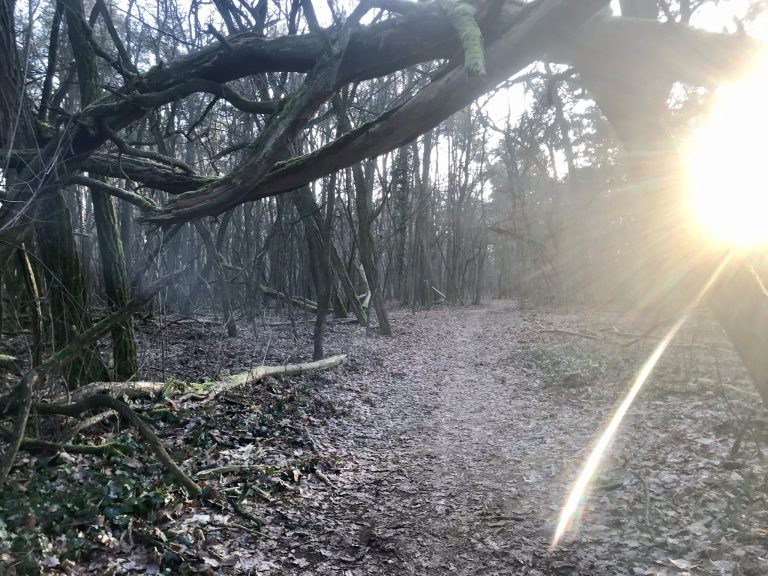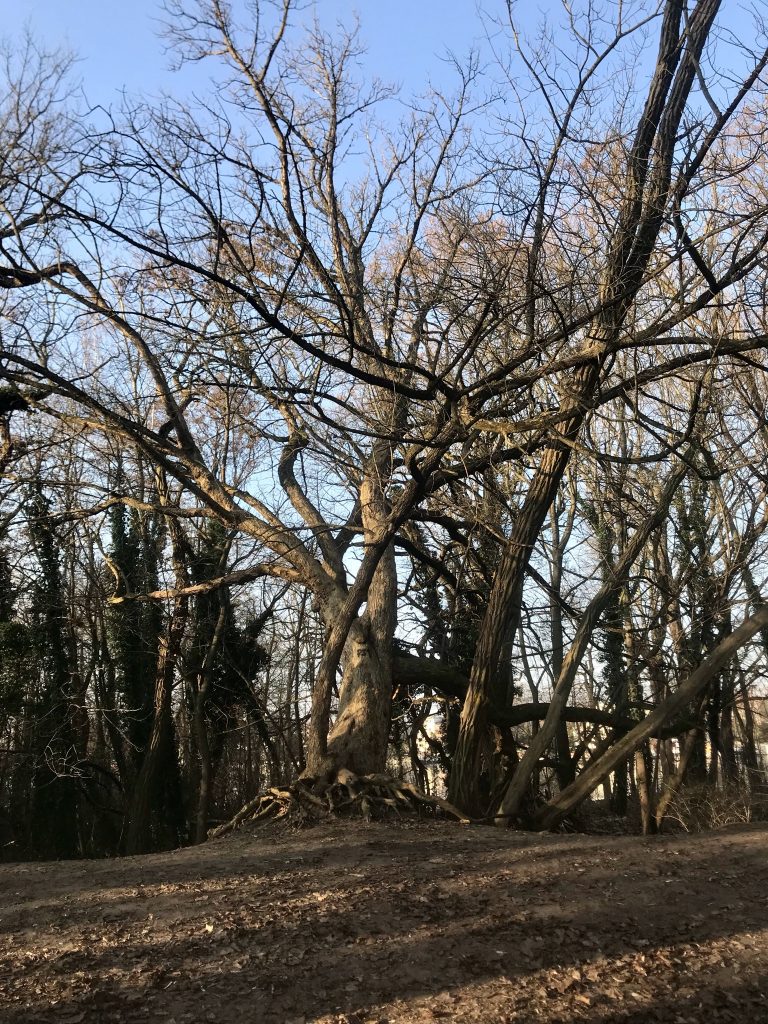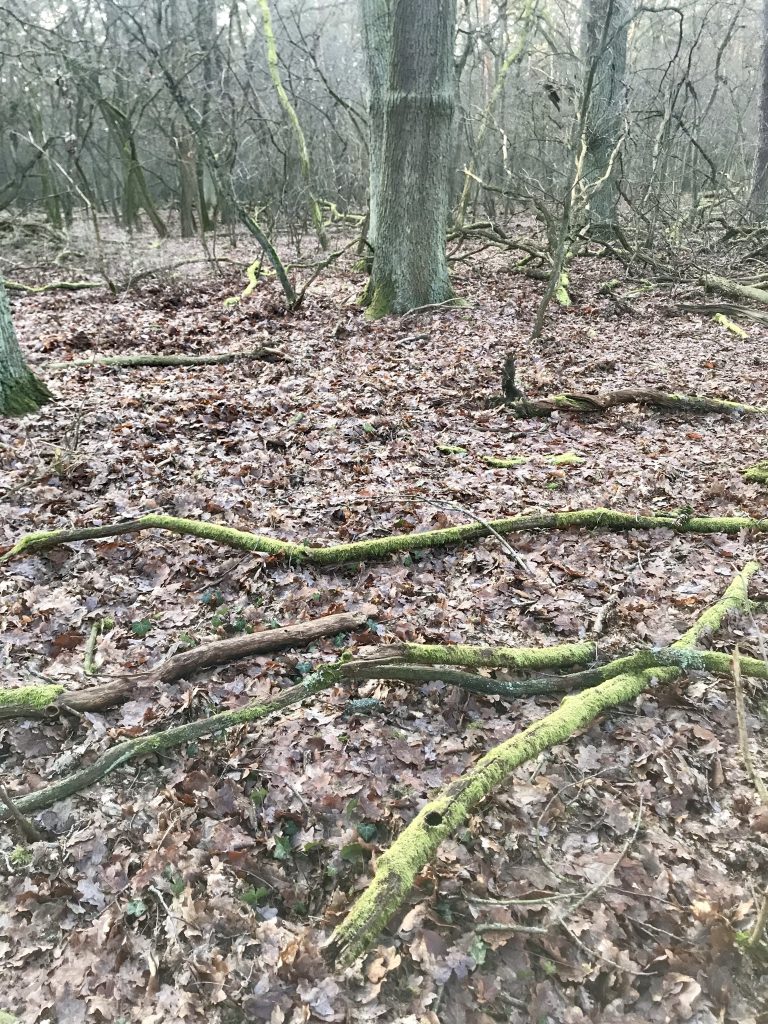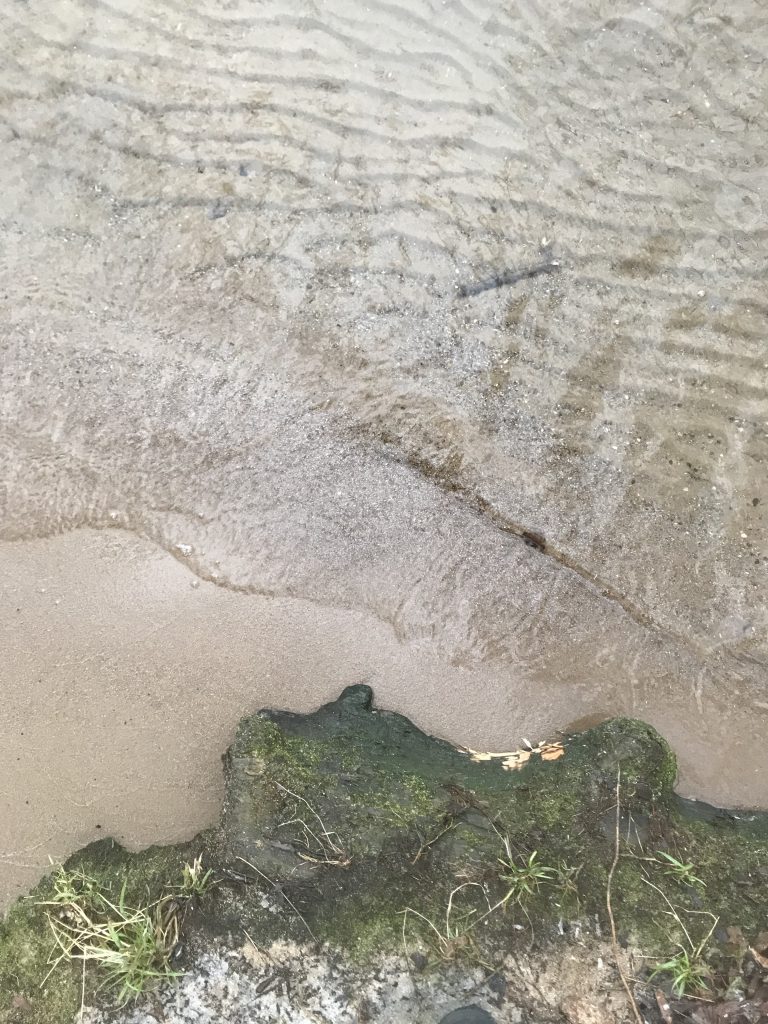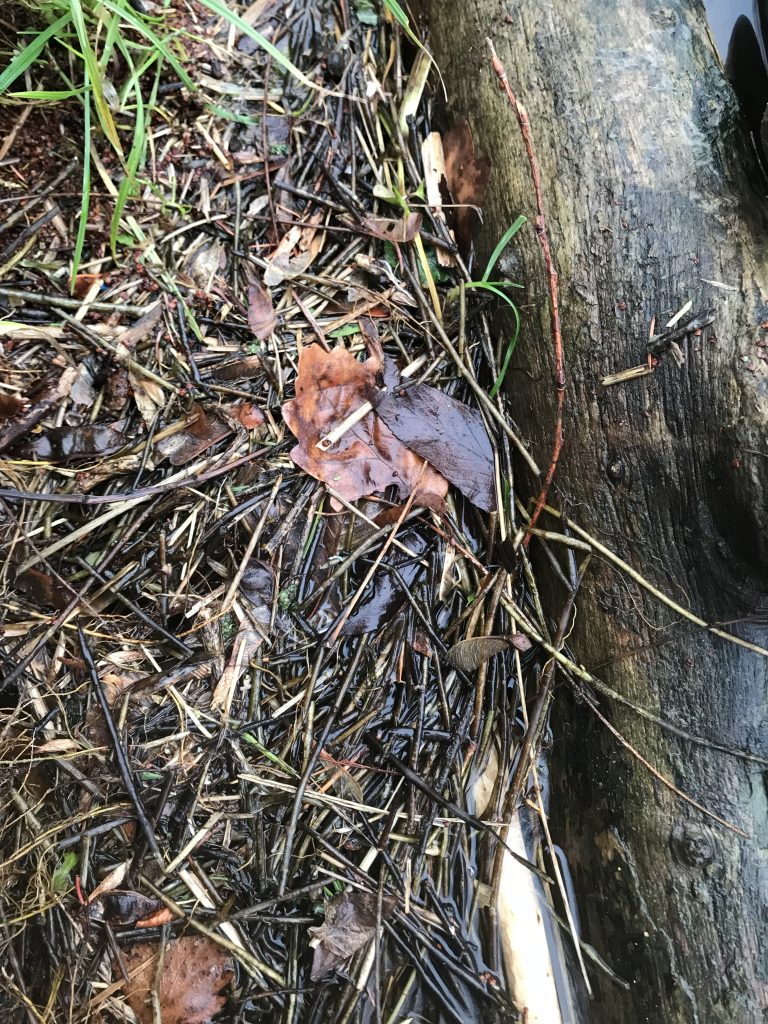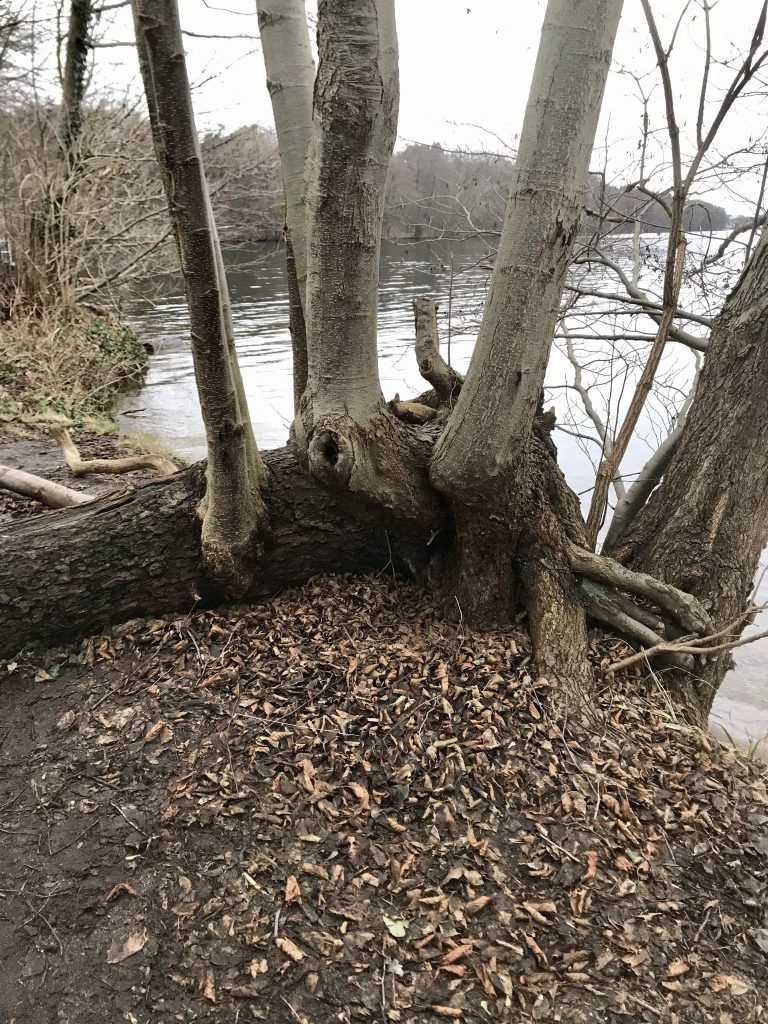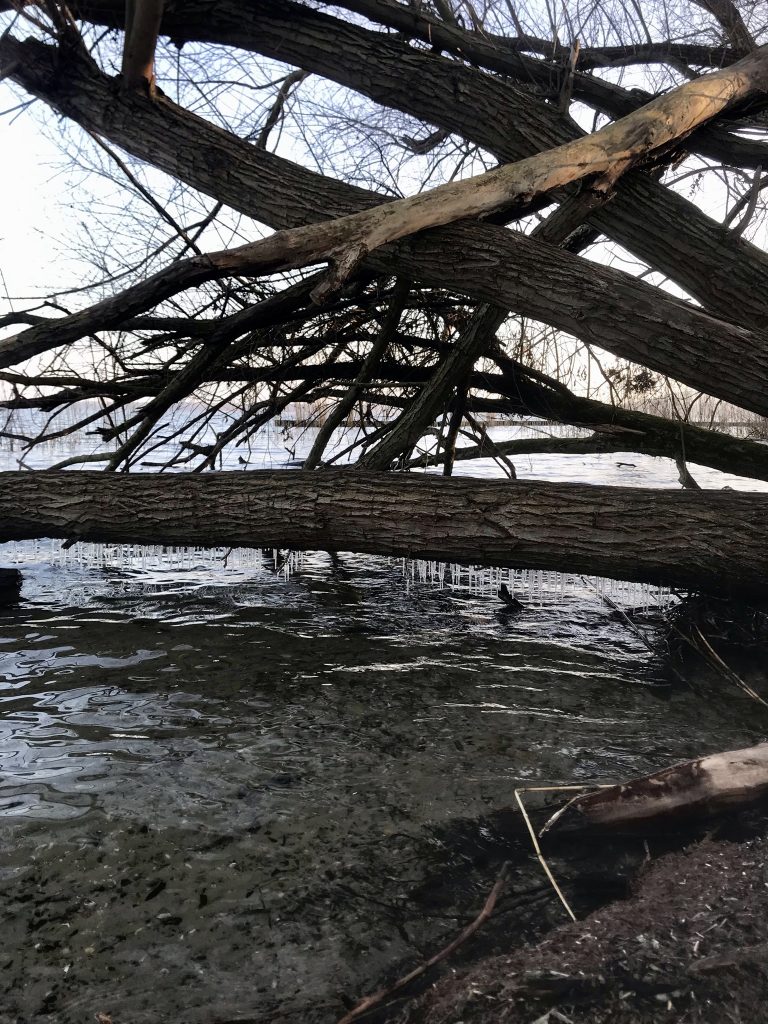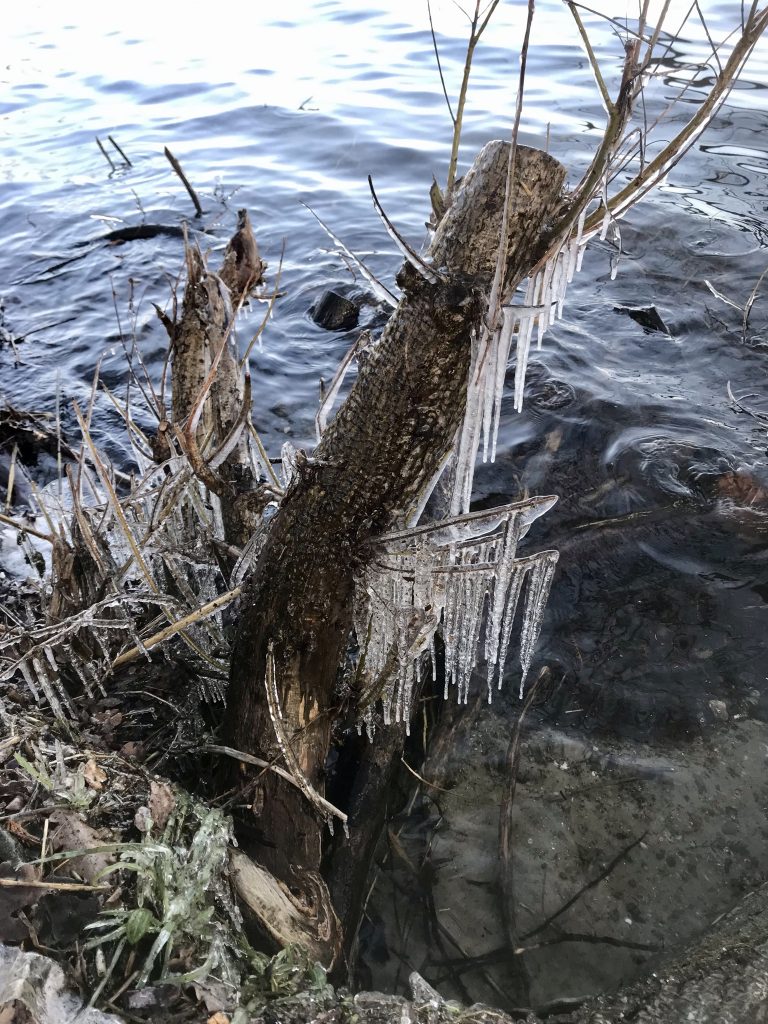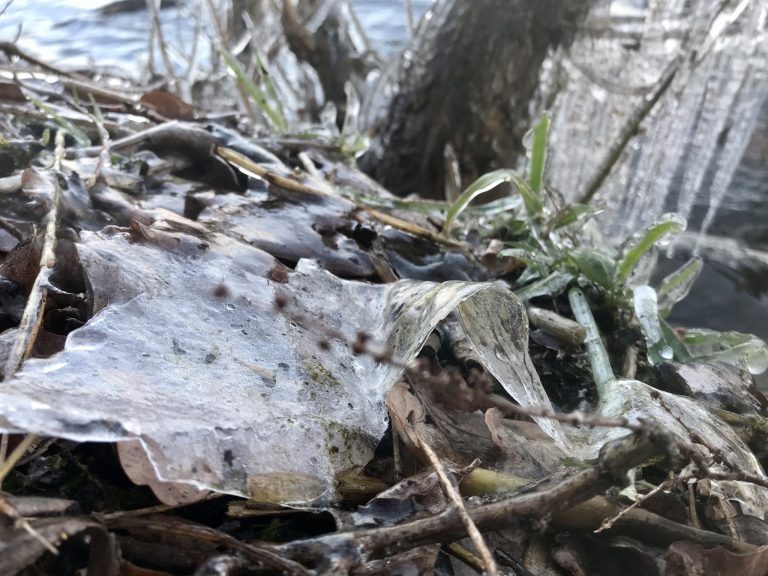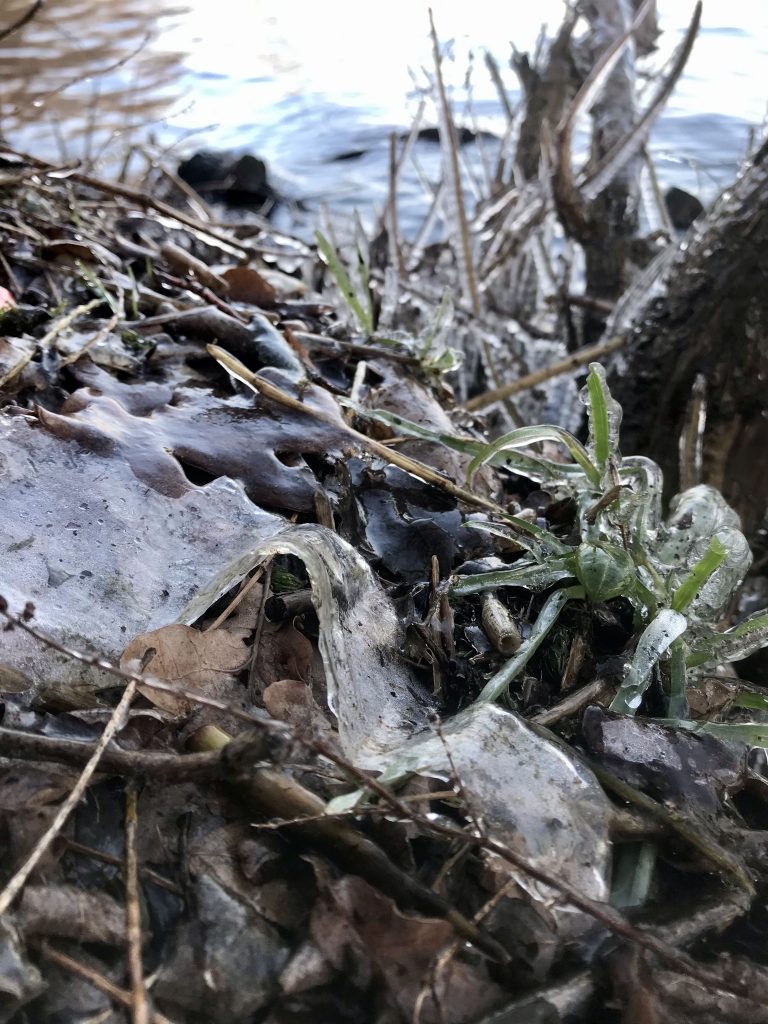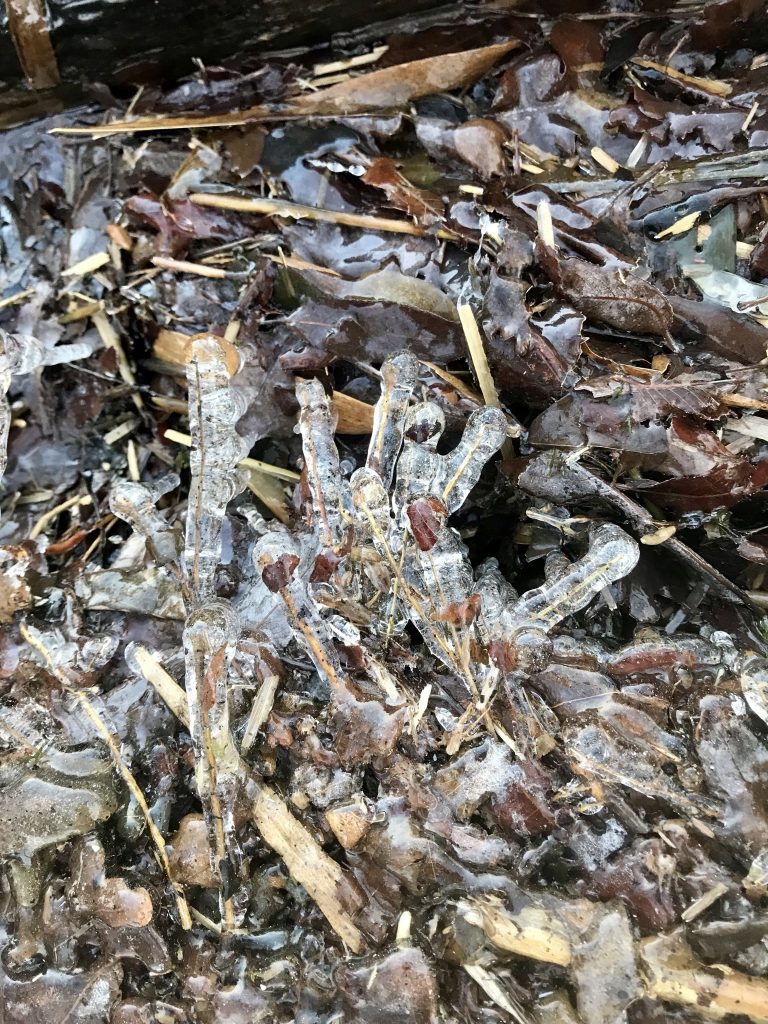NINA PIXEL: MÜGGELSEE OBSERVATIONS
ZUIHITSU
QUIRKY THOUGHTS COLLECTION
Essays, personal stories and curiosities from our guest fem人le contributors
NINA PIXEL: MÜGGELSEE OBSERVATIONS
(Take care of yourself | Take care of others | Take care of the planet)
To hear can mean to listen attentively (Webster dictionary) or that information has been received by the ear. One can hear somebody or something. As a Webster dictionary suggests, one can hear confession in a Roman Catholic Church. We can overhear someone or something without the intention to listen. We can intentionally perceive, tune in, observe. As Webster says, listening means giving attention to sound or sounds or perceiving with the ear to hear with thoughtful attention, to consider seriously.
Listening takes place in the auditory cortex. It is based on the experience of the waveforms transmitted by the ear to the brain. We are trained in categorizing sounds since we start to understand the external world since it has been explained to us. We learn how birds sound, what the sound of the water is and how to identify the wind. As Pauline Oliveros says, sound pressure patterns assist hearing, but cultural patterns influence listening.
How do I listen to the forest? What is the language of the river, and how can I understand trees?
I decided to spend all possible time in January in the woods behind my house. I wanted to comprehend it. I tried to listen, observe, journal, record, draw, feel. I spent my mornings, evenings, and noons with trees, rivers and recording devices.
My first recording instrument was my memory. Pretty much an opposite of an exact recording instrument, as I learned. Although I was thrilled by the idea of memory being my very first tool to mention. How dramatic! Perception of time seems to be an illusion of our brains. The memory of sounds turned into a dream-like sensation right after I came home from the recording session.
What do I remember?
The sound of raindrops on my skin, on leaves, hitting the rotten grass and muddy ground, swooshing through the tree branches around my ears, allowing me to hear, to listen.
How does rain sound to you?
The Sound memory of raindrops has become a tiny space-time capsule, bonded to the exact moment and place, the first artefact for my research collection. All sounds we remember belong to a particular space-time, a specific trigger that vibrates the air.
“There is no sound pressure variation that will always lead to one and only one perception, and there is no perception that always comes from one and only one pressure variation.” (Handel & Oliveros). Your rain will not sound like my rain.
Next time, to share my experience satisfactorily, I materialized a few memories for you. My goal is to listen deeply, consciously, observe, and eventually write a report about it.
What did I expect?
I imagined entering the forest and collecting sounds, impressions, pictures, and rememberings like they grow there like mushrooms. I imagined encountering wild animals, recording the vibrant sounds of insects and reconstructing them into a colourful carpet, a composition you can listen to as a message from the place.
What did I learn?
The sounds are not always so spectacular as we are used to from our stimulated culture. I intended to create the “perfect” composition from hours of actually mostly noisy recordings. I primarily commented how loud I was, so I heard nothing else but my jacket or someone else talking in the distance. The dramatic sounds of nature, boosted and reverberated, amplified; those sounds were not waiting for me. I have learned that we create so much sound and noise only with our clothes that they can overpower all beautiful, calm and peaceful messages constantly coming from nature.
I have learned that I have to stop moving, breathing and mainly thinking to become invisible and receive rather than impose. After turning into an imaginary invisible observer, the outside world offered me generous material to work with.
Channel vibration through the heart and focus on the sound that will heal you and help heal others
A message I received after the annual ritual I have been doing. Every year, sometimes every few months, I take a few days to reconnect with my roots. I ask my ancestors for support, all kinds of universe beings, to learn my upcoming mission. What shall I know to make the world a better place?
Channel vibration through the heart. Make sounds for others.
Healing seems to be a topic we all need to incorporate into our lives. Lost connection with nature, with our base, need for grounding ourselves, the need to stop. Look into the distance, touch something alive, inhale love instead of fear and anxiety. What do you want to do to make the world a better place?
136,10Hz
Everything in nature vibrates.
Sound tunes our bodies through frequencies on our nervous system. The proper medicine, in this case in the form of vibration, promotes individual empowerment and balances out our active and receptive powers. I am taking this message and reinforcing the inner mission to create vibrations with a healing purpose. My editing tool suggests using word beats instead of vibrations. How thoughtful. Well, then, I am taking this message and reinforcing the inner mission to create beats with a healing purpose. The plan is to act as an extension of nature with tools enabling us to develop environments for others to release, heal and learn. The goal is to create so others can receive.
Inhale, exhale, disappear.
One morning I fished sounds from the frozen river. I hooked noises of morning tides on my hydrophone like they would be the shiniest fish in the pond. I fished out the sonic whale!
Every day at 9AM, a colossal metal boat travels the Spree river down towards the lake. At 5PM, it comes back. It is huge and loud and one of many sonic polluters of the environment here. The others are personal and professional boats loaded with humans drinking beers and playing aesthetically insufficient and ignorant loud music while assuming they are living their moist Instagram dream. The lake will become an environmental zone and will only allow hybrid and electric boats from 2025. Critics are loud, like the music playing from their ships.
“Diesel and petrol ships often spill fuel and oil into the river and lake water. Wave action also erodes the shore and harms ecosystems such as fish spawn. The wave impact would not be reduced by hybrid and electric boats, but certainly, the noise and combustion residues transported through the water to all lake areas. The sports clubs do not see this problem.” (https://www.green-zones.eu/)
Inhale, exhale, disappear. My little ritual for beginning each observation is remembering the importance of surrendering to the subject. No judgement, open head and heart. I hope for melting ice. It is rare this winter anyway. My ultimate catch of melting ice under ships and boats became just an encapsulated memory. I have never captured it on the mic. I have listened to that sound only once this year, and I did not record it. Immersive sound installation – crackling melting ice in the water and pieces of ice hitting each other in the morning river traffic. It lives in my recollection. The precious untransferable idea of sound perfection. Since then, I have hoped for the ice. It came one more time, and this was the day I was standing, ready, all prepared with my hydrophone for the melting ice symphony. Nothing was melting. No boats. No birds. Only silence.
The days after deep meditation and fasting appeared to be the most successful in searching for the best observation approach. To truly listen meant to disappear.
Suddenly I hear a very low vibration. A drone. What is that? Coming slowly and steadily from underwater, from the ice world. I could hear how the space fills in with the frequency taking so much space and getting stronger each second. There it was – a massive monster truck of the water boards! Strike! I got the sound. At the same time, I have realized how huge the environment’s pollution by noise and chemicals might be. How much oil do they extract into the river? The area I live in is a “Naturschutzgebiet”, a place of nature care. So how do those engine monsters and party boats exactly care?
“Sounds carry intelligence. Ideas, feelings and memories are triggered by sounds. If you are too narrow in your awareness of sounds, you are likely to be disconnected from your environment.” (Oliveros).
I have to step out of myself to connect to my environment.
What did I do?
When I was a tiny being, I spent many days in the forest. I would sit in the moss for hours and observe the forest, often wishing for a miraculous sun ray or a magical gate turning me into an animal or giving me the power to speak with them. When you see a gate made out of two or more trees, go there, it is a door into another realm. When you see the sun shining onto someplace, and your heart jumps a little, go there and listen to that place. It has a treasure for you.
To hear better, to feel deeper
I decided to come as often as possible, see the development, slight changes of the same places, and observe “the same place” as a unique organism, constantly changing and transforming. No place is the same; no sound is the same when we watch them in time.
I used very sensitive microphones for hydro and seismic measurements to capture what these places wanted to say. Indigenous cultures teach us that in each object, plan, organism sits and intelligence a spirit. If Pauline says that sounds carry intelligence, they might as well carry a spirit.
Every time I entered my field of observation, I stepped into the holy realm of spirits; I hoped they might talk to me, using the sound as our language.
When you ask the forest out loud for a talk, it most probably will feel super silly. I felt like this was a good introduction, and as a good guest, I should politely explain my intentions. Such a tiny ritual can suddenly turn into a powerful tool. I am not sure whether spirits care about my article at all.
From Awareness to activism
Each living being plays a particular role on this planet. That’s what indigenous knowledge teaches us. Each being has certain gifts, its own intelligence, story and spirit. Wall Kimmerer says that education should enable us to discover them and use them well. These gifts, according to Kimmerer, are a way of caring for each other. It is a diversity and inclusion strategy developed by the ultimate enterprise – nature, to take good care of all “employees”. Some plants are responsible for feeding hungry animals; some animals should provide for other parts of the system. Kimmerer calls it a “web of reciprocity”. It connects us all. It is not only about feeding and being fed. It is the whole ecosystem interconnected and intertwined. What is the gift you share with others?
When my close friend experienced a loss in her life, she lost a piece of herself. Like when you tear apart two plants growing tight together, one of them loses a big chunk of roots or gets damaged while the other plant does not recognize anything and grows further. My dear friend was missing roots. She met a wise person on her journey, who asked her a question:
“Do you have a purpose in your life?” “No.” Answered my friend. “Until you find it again, I will give you one: Take care of yourself, take care of others and take care of the planet.”
Indigenous teachers tell us that plants are unique beings with their own will. They come where they are needed and always find their place to fulfil their roles. I believe our purpose can shift and evolve, depending on our skills, environment or conditions we live in. Same as plants, we adapt and evolve. Without being aware of our role in the ecosystem, we might feel like we lost roots or we stop growing perhaps. Without purpose, we fade. Do you have a purpose in your life?
My listening to the biotope gained quite intimate qualities. I placed microphones into all kinds of forest places, sometimes without consent. Most of the time, I got no response. Are my microphones not sensitive enough? Am I too impatient? Am I too loud? Is this place dead or hiding? No. Oh, what an anthropocentric approach, Nina!
I decided to talk to them. Loud and clear. Polite and firm, to show my respect and devotion. The land and waters became my teacher, or rather a narrator. Trees started to share their stories, and sometimes I learned something from birds or hungry ducks. I believe that to the attentive observer, plants reveal their secrets. Nature has its own language; what is the sound of a falling tree when nobody listens anyway?
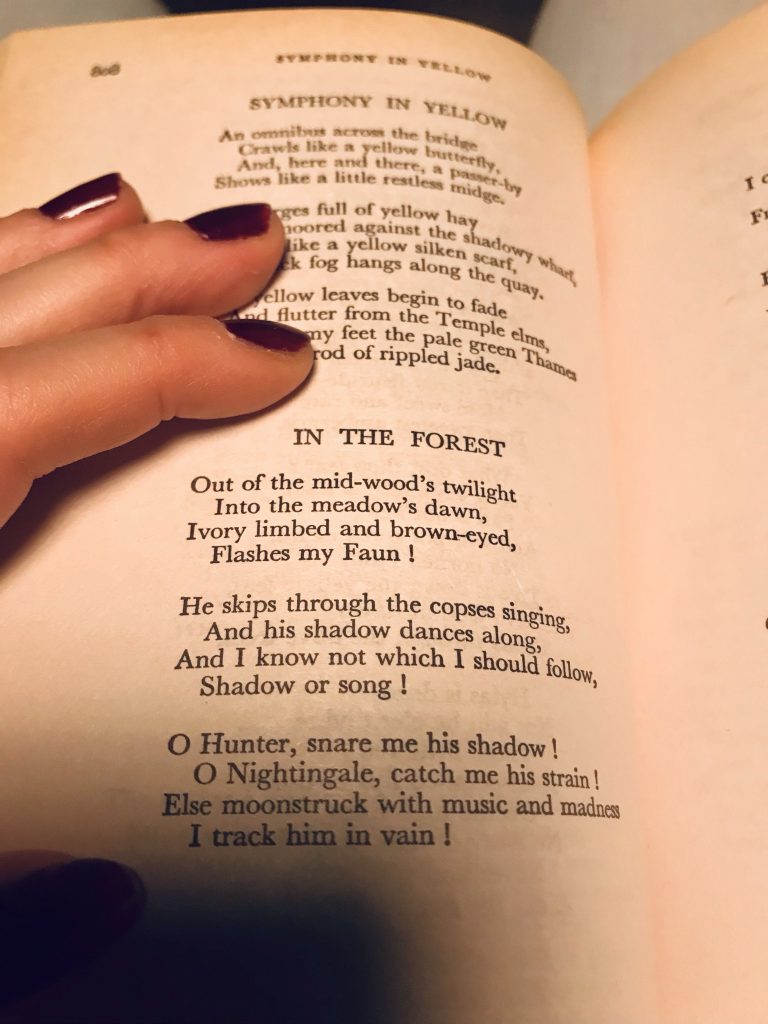
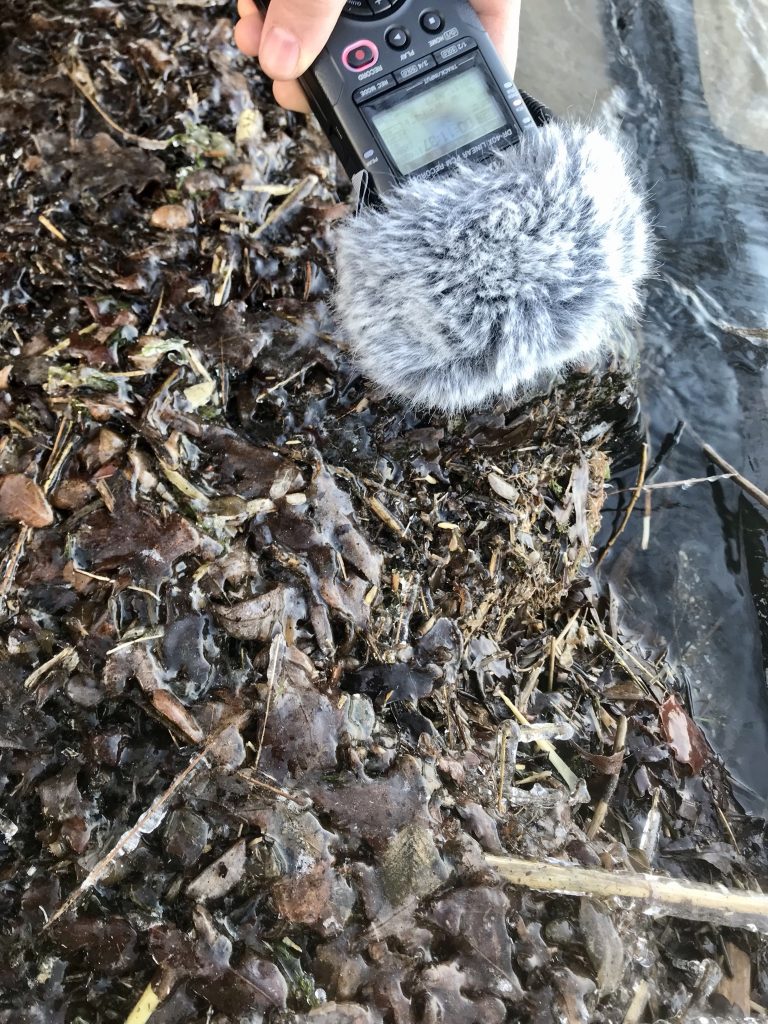
FREQUENCIES I LISTENED TO: 64Hz, 126,22Hz, 111Hz, 256Hz, 666Hz, 936Hz
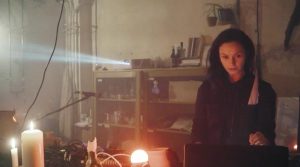
Nina is a conceptual sound artist, using field and voice recordings, tapping and cracking rhythms in never-ending journeys, pre-apocalyptic fairy tales, emotional topography of unique landscapes, like the archaeologist of the human soul. Her music journeys into the noisy rites and industrial myths strongly inspired by nature.
Nina has performed in national galleries in Amsterdam
and Prague, Berlin clubs like ://about blank, Suicide Circus or Tresor or industrial spaces, silos and old factories.
Nina is currently based in Berlin and performs under Nina Pixel or BLACK ACID. Nowadays, she is writing a score for a modern performative theatre piece, rethinking concepts of women and gender equality. Her upcoming album Ancestral Archeology (2022) revamps cultural norms and recreates traditional narratives of Slovak cultural memory. A new story of modern folklore is an empowering invite to build one’s own identity aligned with our inner calling rather than following an offered history.

